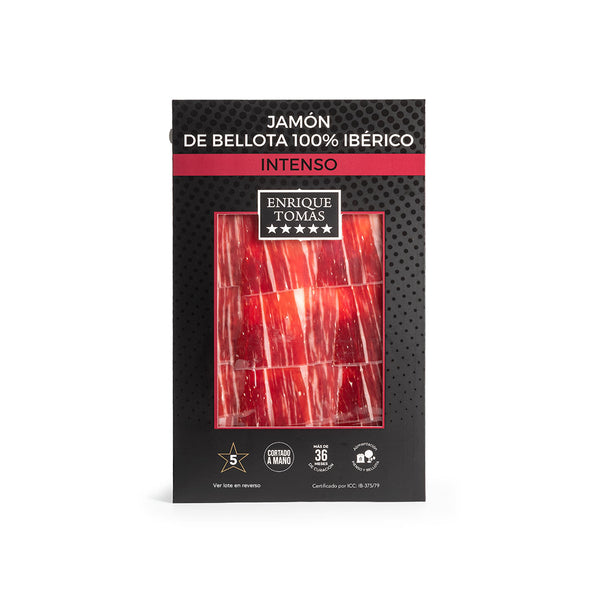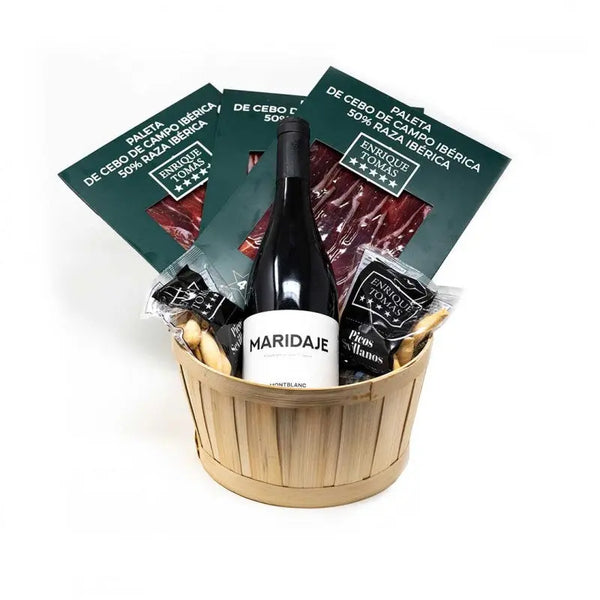
Why is it called Jamón Ibérico/Iberian ham?
Why is it called Iberian ham? What is its origin and what are its characteristics? How is it made? We must start with a premise, when we refer to Iberian ham, we are talking about a food obtained from the process of salting and air-drying the hind legs of the Iberian breed pig.
Enrique Tomás provides answers to these and other questions.
Iberian Ham: Its Origin and Characteristics
Its Origin
Iberian ham can only come from Iberian pigs. Therefore, the first thing to highlight is that it should never be confused with serrano ham, which comes from white pigs, not Iberian ones.
The Iberian pig is native to the Iberian Peninsula. It is a unique species with characteristics that differentiate it from other animals of the same species, such as the ability to infiltrate fat into the muscle.
Physically, these animals have a well-proportioned head and a pointed snout. Unlike other types of pigs, the Iberian pig has a powerful neck, a hanging dewlap, medium-sized ears shaped like a visor, and a broad belly. Their limbs, which are of most interest when it comes to ham, are slender.
According to the legislation that regulates the production of Iberian ham, the term "Iberian pig" includes all pigs whose mother is 100% Iberian and is registered in the genealogical book of the Iberian Pig Breed. The offspring of this pig, and therefore the products produced from them, can have different levels of purity: 50%, 75%, or 100%.
- Want to know more? Pig breeds: the Iberian pig.

Iberian pigs in the Dehesa eating acorns

Iberian Pig
Its Name
After reading the previous point, you surely know why it's called Iberian ham, there's no doubt it's due to the name of the breed of pig from which it comes: the Iberian breed pig, unique to our peninsula. Iberian ham is the most prized range of hams and one of the star products of world gastronomy.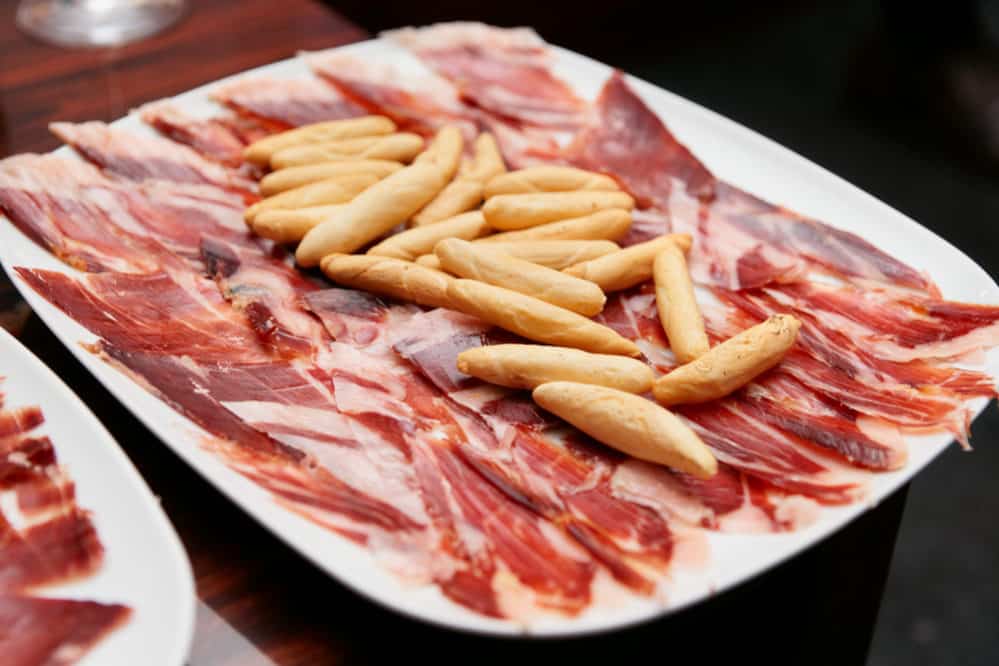
Iberian Ham
Types of Iberian Ham Based on the Diet of the Iberian Pig
In addition to the breed, to differentiate Iberian pigs from each other and classify them, we need to consider their diet. First of all, Iberian ham can be of three types: "de cebo" (grain-fed), "de cebo de campo" (outdoor-reared grain-fed), or "de bellota" (acorn-fed). And here's the question: What's the main difference between them? Their diet.
On one hand, grain-fed Iberian pigs, which are raised on farms, are fed with feed and cereals. On the other hand, outdoor-reared grain-fed Iberian pigs combine farm life with roaming freely in the fields to graze, which is why they have a diet that includes both feed and wild fruits collected from the fields.
In contrast, the Iberian pigs that give rise to acorn-fed Iberian ham are those that undergo the "montanera" period, living freely in the dehesas during autumn and winter, feeding on acorns and other herbs and fruits of nature. Acorns have exquisite oil that the pig infiltrates into its muscle, turning it into highly prized fat that gives you the sensation of it melting in your mouth when you taste it.
At Enrique Tomás, we differentiate them with the white, green, and red labels.
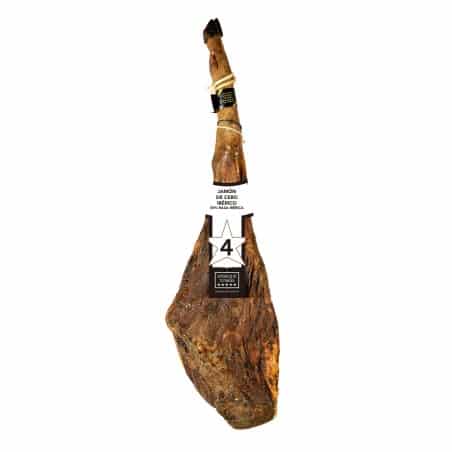
Buy Grain-Fed Iberian Ham
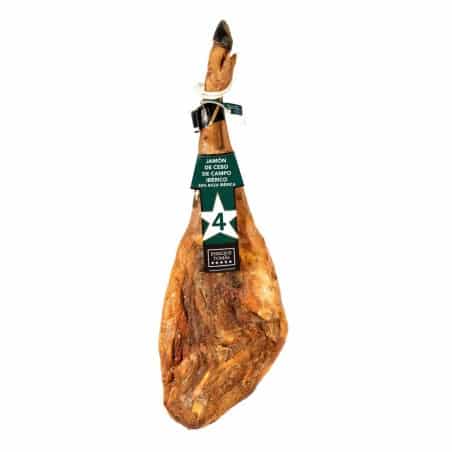
Buy Outdoor-Reared Grain-Fed Iberian Ham
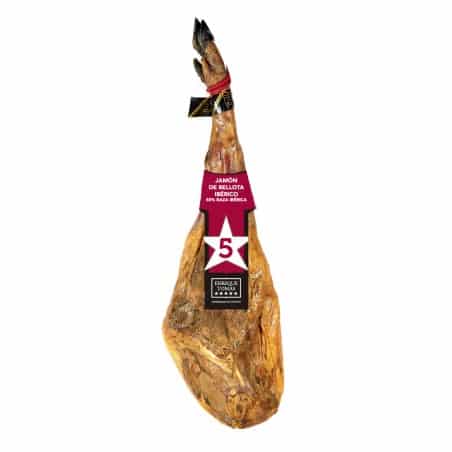
The Curing Process of Iberian Ham
Another crucial variable to consider in differentiating Iberian ham is what we say at Enrique Tomás: "the cooking process". This "cooking" is nothing more and nothing less than the conditions in which the leg is preserved, the amount of salt, the storage temperature, and the curing time. In short, ham is cured with time, wisdom, care, and salt.
In the case of grain-fed Iberian ham, the curing time must be 24 months. For outdoor-reared grain-fed Iberian ham, it's around 24 to 30 months, and for acorn-fed Iberian ham, it's from 36 months onwards, making it an exceptional ham in terms of taste.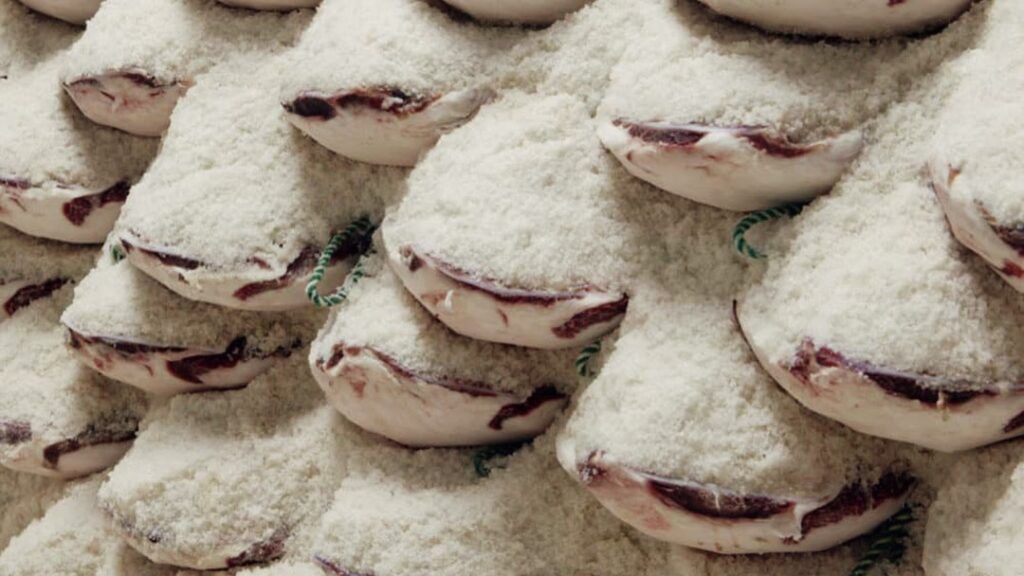
100% Iberian Acorn-Fed Ham - Pata Negra
Why is it called Pata Negra Iberian ham? 100% Iberian acorn-fed ham is the most precious of all, popularly known as "pata negra" (black hoof). From 100% Iberian breed pigs, these pigs are raised in freedom in the dehesa, where they have feasted on acorns, wild plants, and herbs throughout the montanera period. The final product from these pigs can be nothing less than meat with an exceptional flavor, thanks to the fat infiltration into the muscle, as well as the nourishment and care they receive.
Eating this ham is a pleasure. As we say at Enrique Tomás: "No one eats ham to satisfy hunger," we eat it to savor it.


